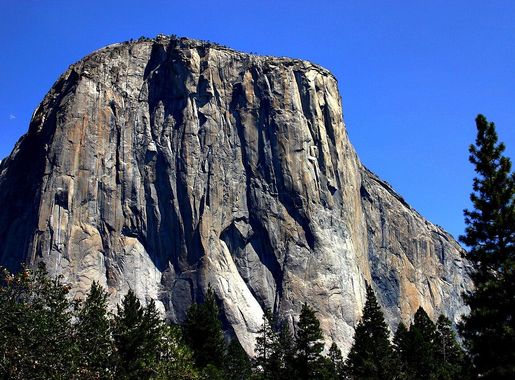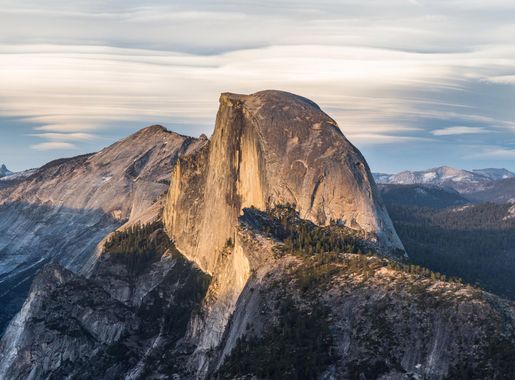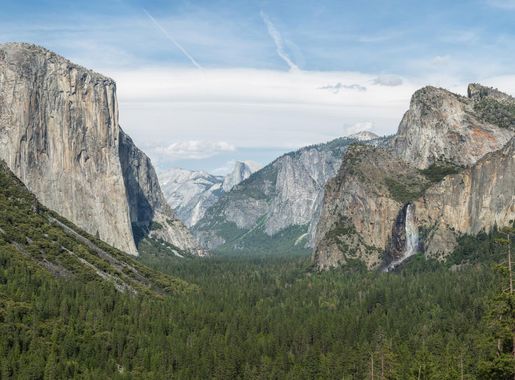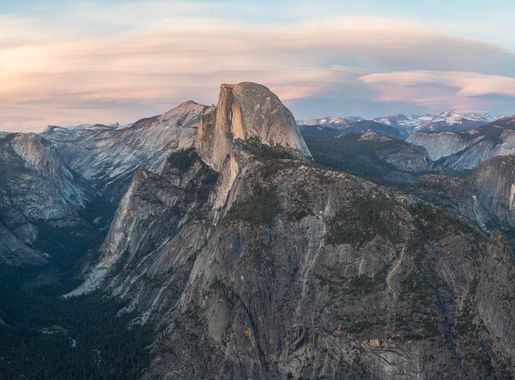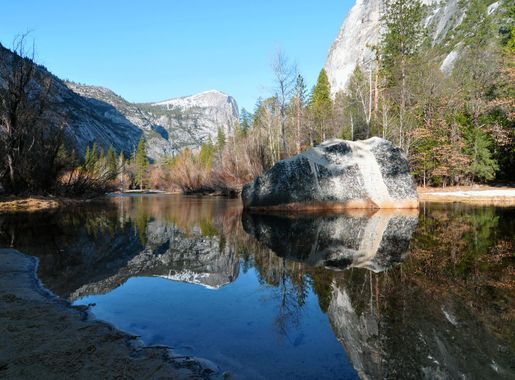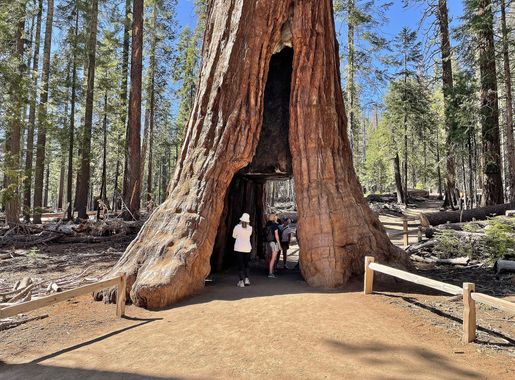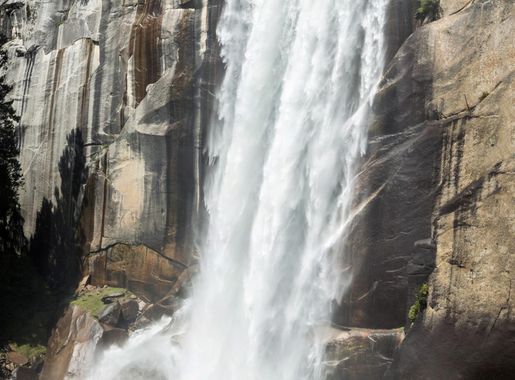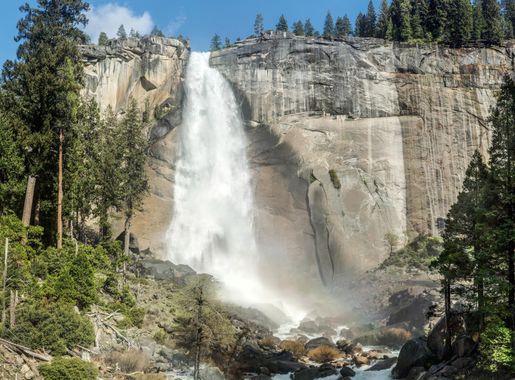
Yosemite National Park: A Natural Wonder in California
Explore the natural beauty of Yosemite National Park: towering granite cliffs, ancient sequoias, and diverse landscapes await in California's Sierra Nevada mountains.
Yosemite National Park is a breathtaking natural wonder located in California's Sierra Nevada mountains. This park is renowned for its majestic granite cliffs, ancient giant sequoias, and diverse ecosystems. Whether you're an avid hiker, a nature lover, or a photography enthusiast, Yosemite offers an unparalleled experience with its stunning landscapes and abundant wildlife. One of the park's most iconic features is El Capitan, a towering granite monolith that attracts climbers from around the world. Nearby, the towering Bridalveil Fall and the serene Yosemite Valley provide picturesque views that are perfect for both relaxation and adventure. For those who enjoy scenic drives, the Tioga Road offers breathtaking vistas and access to high-country lakes and meadows. Yosemite is also home to the Mariposa Grove of Giant Sequoias, where visitors can marvel at some of the largest and oldest trees on Earth. The park's diverse terrain includes everything from lush meadows to rugged mountain peaks, making it a haven for various outdoor activities such as hiking, rock climbing, and camping. With its rich natural beauty and numerous recreational opportunities, Yosemite National Park remains a must-visit destination for any traveler.
Local tips in Yosemite National Park
- Visit during the shoulder seasons (spring and fall) to avoid large crowds and enjoy mild weather.
- Make reservations for accommodations well in advance, as lodging inside the park fills up quickly.
- Bring plenty of water and snacks, as amenities within the park can be limited.
- Wear comfortable hiking shoes to explore the park's numerous trails and scenic spots.
- Check the park's website for current weather conditions and trail updates before your visit.
Yosemite National Park: A Natural Wonder in California
Yosemite National Park is a breathtaking natural wonder located in California's Sierra Nevada mountains. This park is renowned for its majestic granite cliffs, ancient giant sequoias, and diverse ecosystems. Whether you're an avid hiker, a nature lover, or a photography enthusiast, Yosemite offers an unparalleled experience with its stunning landscapes and abundant wildlife. One of the park's most iconic features is El Capitan, a towering granite monolith that attracts climbers from around the world. Nearby, the towering Bridalveil Fall and the serene Yosemite Valley provide picturesque views that are perfect for both relaxation and adventure. For those who enjoy scenic drives, the Tioga Road offers breathtaking vistas and access to high-country lakes and meadows. Yosemite is also home to the Mariposa Grove of Giant Sequoias, where visitors can marvel at some of the largest and oldest trees on Earth. The park's diverse terrain includes everything from lush meadows to rugged mountain peaks, making it a haven for various outdoor activities such as hiking, rock climbing, and camping. With its rich natural beauty and numerous recreational opportunities, Yosemite National Park remains a must-visit destination for any traveler.
When is the best time to go to Yosemite National Park?
Unmissable attractions to see
Yosemite Valley Welcome Center
Explore Yosemite National Park’s natural beauty and rich history at the Yosemite Valley Welcome Center, your essential guide to adventure.
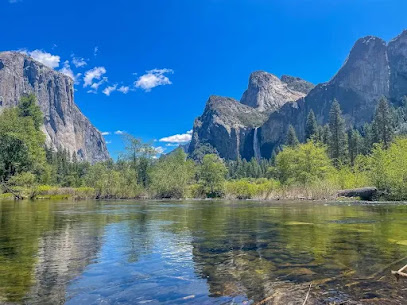
Glacier Point
Experience the majestic beauty of Yosemite National Park from Glacier Point, where breathtaking vistas and nature's wonders await every traveler.
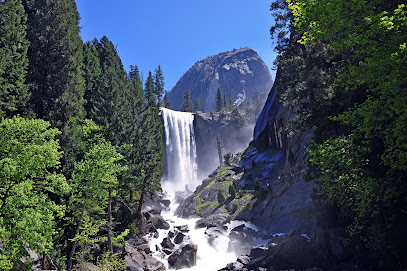
Lower Yosemite Fall Trailhead
Discover Lower Yosemite Fall Trailhead, a stunning natural attraction in Yosemite National Park, perfect for hikers and nature lovers seeking breathtaking views.
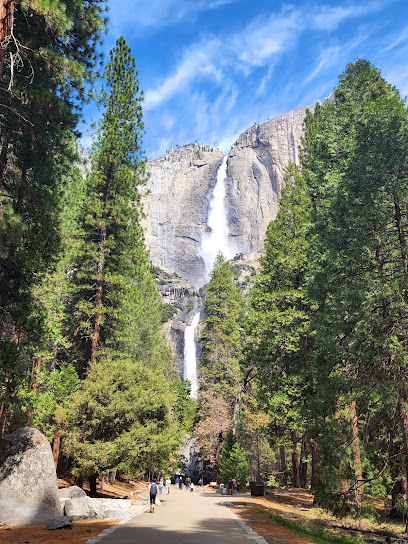
Lower Yosemite Fall Vista Point
Explore the breathtaking beauty of Lower Yosemite Fall Vista Point, a serene escape in Yosemite National Park with stunning waterfall views and tranquil surroundings.

Vernal Falls
Experience the breathtaking beauty of Vernal Falls, a stunning waterfall in Yosemite National Park surrounded by lush wilderness and scenic hiking trails.
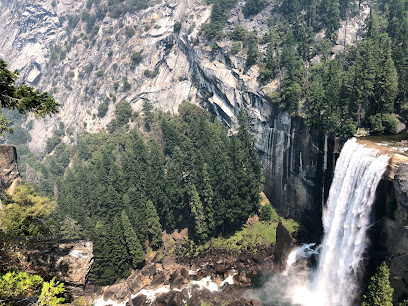
Tunnel view
Experience the stunning panoramic vistas of El Capitan and Half Dome at Tunnel View, a must-visit scenic spot in Yosemite National Park.
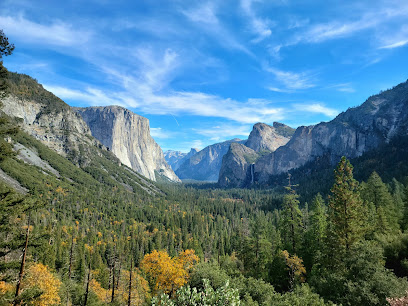
Olmsted Point
Discover the stunning vistas and unique granite formations at Olmsted Point, a breathtaking scenic spot in Yosemite National Park.
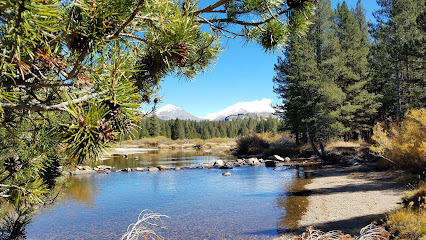
Yosemite Falls
Experience the breathtaking beauty of Yosemite Falls, a must-see natural wonder in Yosemite National Park, California.
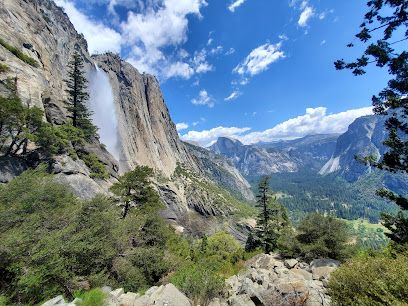
Yosemite Valley View
Explore the stunning beauty of Yosemite Valley View, a scenic spot that showcases California's natural wonders and breathtaking landscapes.
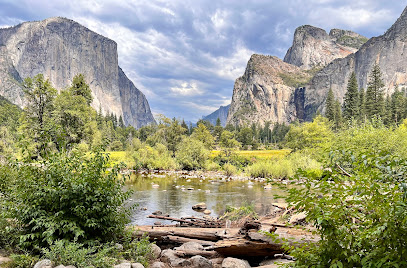
Yosemite Mountain Sugar Pine Railroad
Experience the beauty of the Sierra Nevada with a scenic ride on the historic Yosemite Mountain Sugar Pine Railroad, a perfect adventure for all ages.
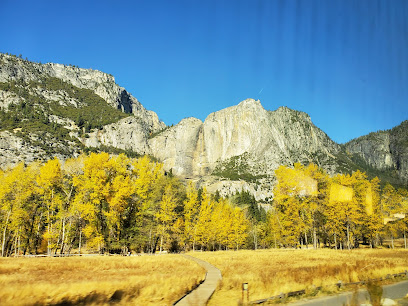
Washburn Point
Experience breathtaking views of Yosemite's iconic landscapes at Washburn Point, a must-visit vista in California's natural paradise.
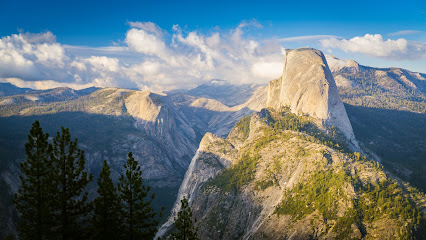
Yosemite Falls Trailhead
Explore the breathtaking beauty of Yosemite Falls Trailhead, a must-visit destination in Yosemite National Park, offering stunning views and hiking adventures.
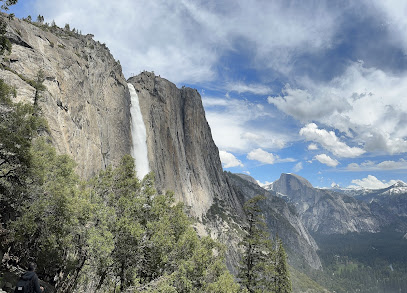
Half Dome
Discover the breathtaking beauty of Half Dome, a must-visit peak in Yosemite National Park, California, offering stunning views and unforgettable adventures.
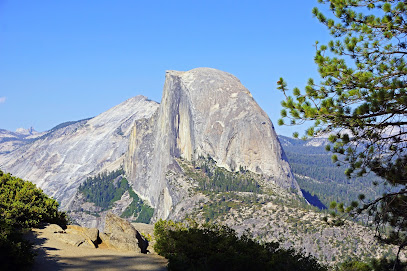
Mirror Lake
Discover the captivating beauty of Mirror Lake in Yosemite National Park, where serene reflections and stunning landscapes await nature enthusiasts.
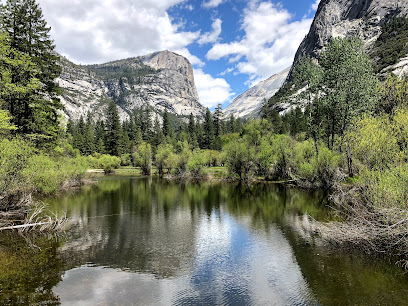
Yosemite Valley Chapel
Explore the serene beauty of Yosemite Valley Chapel, a historic gem nestled in the heart of Yosemite National Park, ideal for reflection and inspiration.
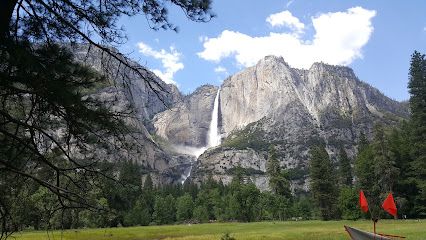
Essential places to dine
The Ahwahnee Dining Room
Experience fine dining at The Ahwahnee Dining Room in Yosemite Valley - where culinary excellence meets breathtaking natural beauty.
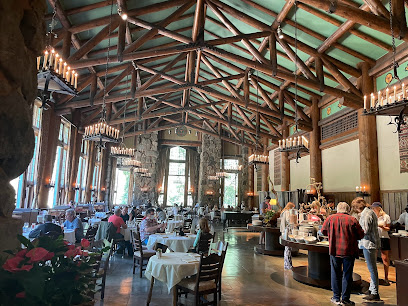
Base Camp Eatery
Experience delicious meals with breathtaking views at Base Camp Eatery in Yosemite Valley—your perfect dining destination amidst nature's wonders.
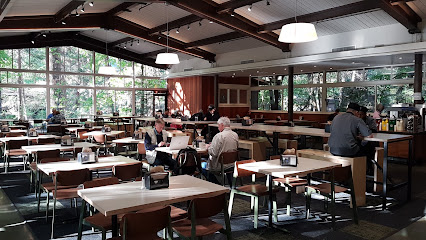
The Mountain Room
Experience American cuisine with stunning views at The Mountain Room in Yosemite Valley Lodge—perfect after your outdoor adventures.
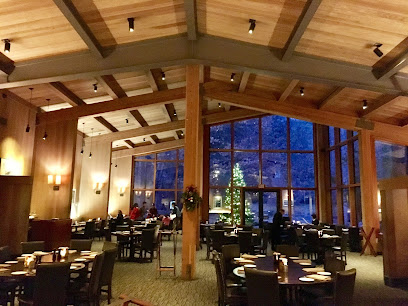
Village Grill
Experience delicious hamburgers and American classics in the heart of Yosemite Valley at Village Grill.
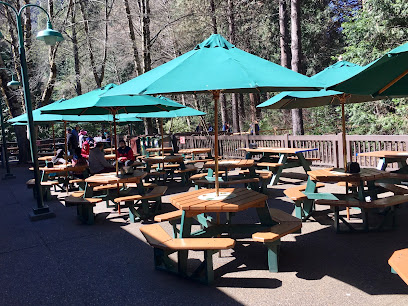
The Loft at Degnan's
Experience delicious pizza and diverse American and Mexican cuisine at The Loft at Degnan's while exploring breathtaking Yosemite National Park.

Curry Village Dining Pavilion
Experience delicious meals surrounded by breathtaking views at Curry Village Dining Pavilion in Yosemite Valley.
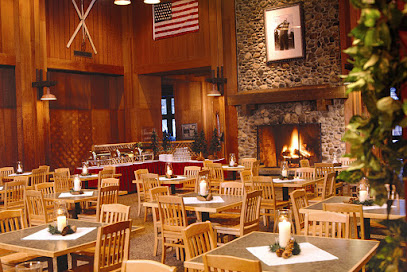
The Skiers Grill
Discover cozy dining at The Skiers Grill, where hearty breakfasts and lunches await amidst the stunning backdrop of Yosemite's Badger Pass.
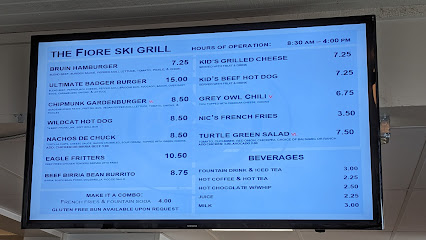
Markets, malls and hidden boutiques
Yosemite Valley Welcome Center
Discover the wonders of Yosemite National Park at the Yosemite Valley Welcome Center, your essential starting point for an unforgettable adventure.
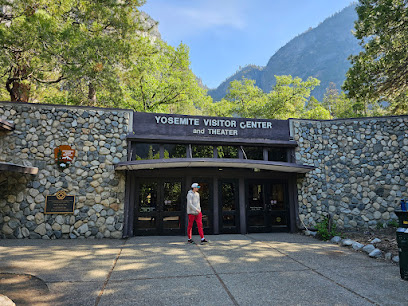
Village Store
Discover the Village Store in Yosemite Valley for groceries, unique souvenirs, and local treasures that enhance your unforgettable adventure.
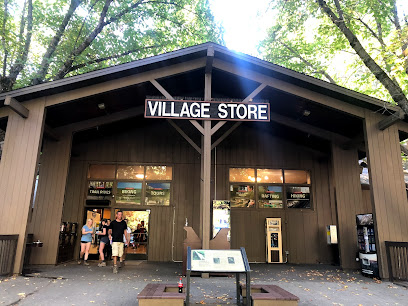
Degnan's Deli
Discover the delicious flavors of Degnan's Deli in Yosemite, where fresh ingredients meet stunning natural beauty for the perfect dining experience.
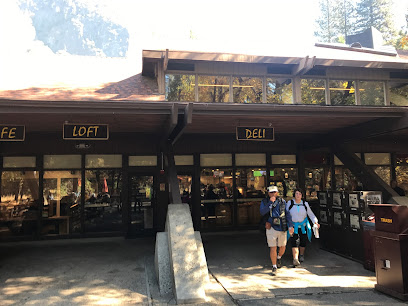
Pine Tree Market
Discover the flavors of Yosemite at Pine Tree Market, your local grocery store in the heart of nature’s splendor, offering fresh produce and essential supplies.
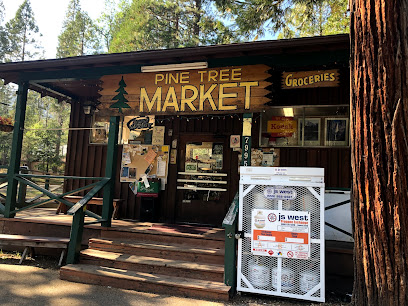
El Portal Market
Discover El Portal Market: Your essential stop for fresh groceries, local treats, and artisanal products near the stunning Yosemite National Park.
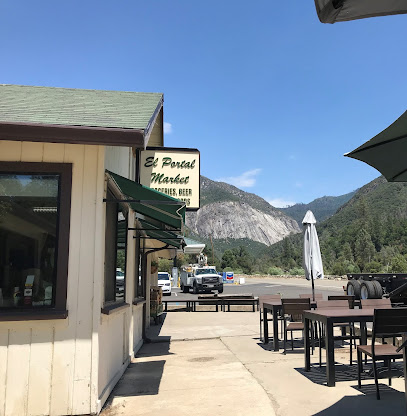
Starbucks Yosemite
Experience a unique coffee haven in the heart of Yosemite National Park, where nature meets the comfort of Starbucks.

Yosemite Gifts
Explore the charm of Yosemite Gifts, your go-to shop for unique souvenirs and local crafts near Yosemite National Park.
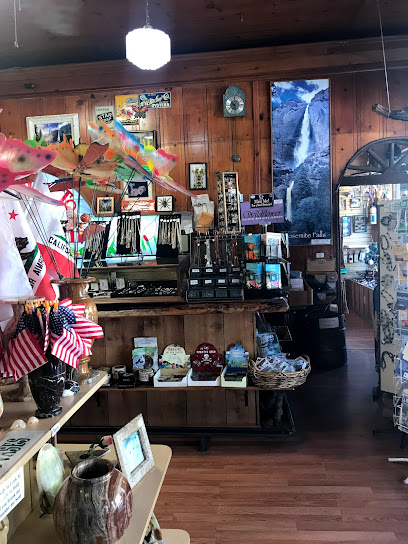
Mountain Shop at Curry Village
Discover the Mountain Shop at Curry Village for all your camping gear and grocery needs while exploring the stunning landscapes of Yosemite National Park.

Yosemite Museum
Discover the rich cultural and natural heritage of Yosemite at the Yosemite Museum, an essential stop for all park visitors.
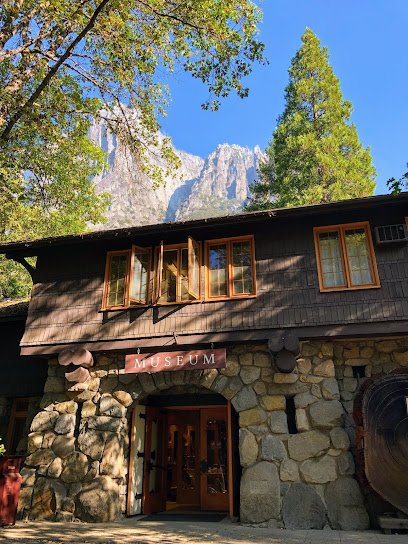
Curry Village Coffee Corner
Experience the charm of Curry Village Coffee Corner, your perfect retreat in the heart of Yosemite National Park, offering delicious coffee and breathtaking views.
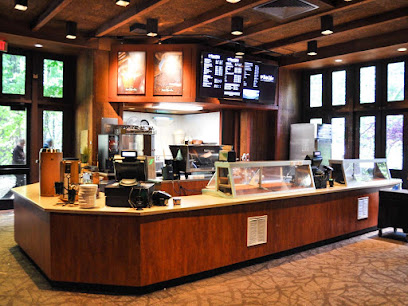
Curry Village Gift and Grocery
Explore the heart of Yosemite with unique souvenirs and grocery essentials at Curry Village Gift and Grocery.
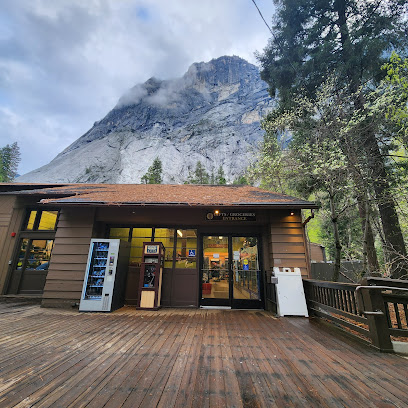
Yosemite Rocks & Gifts
Discover unique gifts and local treasures at Yosemite Rocks & Gifts, a charming shop near Yosemite National Park, capturing the essence of nature.

Yosemite Falls Trading Post
Explore a treasure trove of unique gifts and local crafts at Yosemite Falls Trading Post, your gateway to Yosemite souvenirs.

Yosemite Adventure Supplies
Explore Yosemite National Park with top-notch gear and local insights at Yosemite Adventure Supplies in Groveland, California.

Yosemite Conservancy Mariposa Grove Depot
Explore the enchanting beauty of Yosemite National Park at Mariposa Grove Depot, your starting point for adventures among giant sequoias and stunning trails.

Essential bars & hidden hideouts
The Mountain Room
Experience exquisite American dining at The Mountain Room, featuring stunning views of Yosemite Valley and a menu that celebrates local flavors.
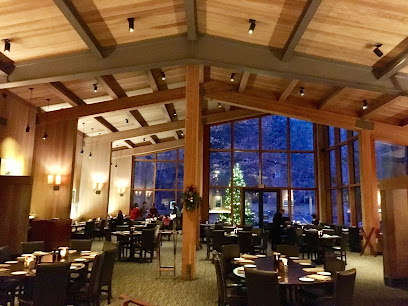
The Ahwahnee Bar
Experience luxury dining in the heart of Yosemite at The Ahwahnee Bar, where breathtaking views and exquisite cuisine await every visitor.
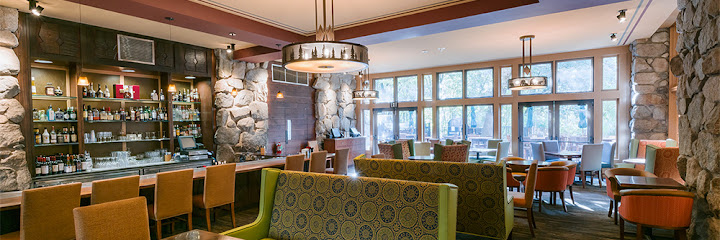
Bar 1899
Discover the perfect blend of nature's beauty and crafted beverages at Bar 1899 in Yosemite Valley.
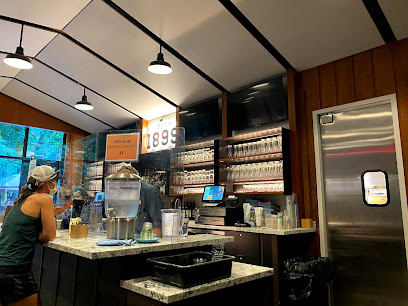
The Mountain Room Lounge
Experience the warmth of The Mountain Room Lounge, where breathtaking views and delightful refreshments blend seamlessly in Yosemite National Park.
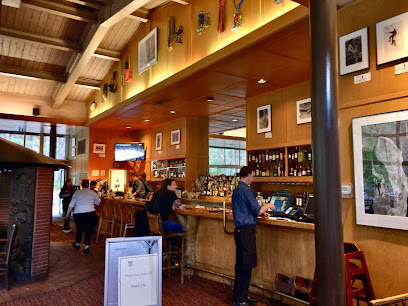
Local Phrases about Yosemite National Park
-
- HelloHowdy
[hah-dee] - GoodbyeSee ya later
[see yah lay-ter] - YesYep
[yep] - NoNah
[nah] - Please/You're welcomePlease
[pleez] - Thank youThanks
[thanks] - Excuse me/SorryPardon me
[par-dun me] - How are you?Howdy
[hah-dee] - Fine. And you?Doing well. How 'bout you?
[doo-in well. How 'bout yoo] - Do you speak English?You speak English?
[yoo speak ing-glish] - I don't understandI'm lost
[ah-m lost]
- HelloHowdy
-
- I'd like to see the menu, pleaseI want the menu
[ah want tha menu] - I don't eat meatNo meat for me
[no meet for mee] - Cheers!Cheers!
[cheers] - I would like to pay, pleaseI pay now
[ah pay now]
- I'd like to see the menu, pleaseI want the menu
-
- Help!Help!
[help] - Go away!Go away!
[go way] - Call the Police!Police!
[po-lease] - Call a doctor!Doctor!
[doc-tor] - I'm lostLost
[lost] - I'm illSick
[sick]
- Help!Help!
-
- I'd like to buy...I buy...
[ah buy...] - I'm just lookingJust looking
[just look-in] - How much is it?Price?
[price] - That's too expensiveToo much
[too much] - Can you lower the price?Lower price?
[low-er price]
- I'd like to buy...I buy...
-
- What time is it?Time?
[time] - It's one o'clockOne o'clock
[wun o-clock] - Half past (10)Half past ten
[half past ten] - MorningMorning
[morning] - AfternoonAfternoon
[after-noon] - EveningEvening
[even-ing] - YesterdayYesterday
[yes-ter-day] - TodayToday
[to-day] - TomorrowTomorrow
[to-mor-row] - 1One
[wun] - 2Two
[too] - 3Three
[three] - 4Four
[four] - 5Five
[five] - 6Six
[six] - 7Seven
[seven] - 8Eight
[ate] - 9Nine
[nine] - 10Ten
[ten]
- What time is it?Time?
-
- Where's a/the...?Where is the...?
[whar is the] - What's the address?Address?
[add-dress] - Can you show me (on the map)?Show me
[show mee] - When's the next (bus)?Next...
[next] - A ticket (to ....)Ticket to...
[ticket to]
- Where's a/the...?Where is the...?
History of Yosemite National Park
-
Long before Yosemite National Park became a symbol of natural beauty, it was home to the Ahwahneechee people. The Ahwahneechee were a Native American tribe who inhabited the Yosemite Valley for centuries. They thrived in this region, living off the land and developing a rich cultural heritage. Their traditional practices, stories, and connection to the land are still remembered and honored today.
-
In the mid-19th century, European-American settlers began to explore the Yosemite Valley. One of the first documented sightings by a European settler was by Joseph Walker in 1833. However, it was not until 1851, during the Mariposa Battalion expedition led by Major James D. Savage, that Yosemite Valley was more widely known. This expedition was part of the efforts to suppress Native American resistance in the region.
-
John Muir, a Scottish-American naturalist and conservationist, played a crucial role in the history of Yosemite. Arriving in the area in 1868, Muir fell deeply in love with its natural beauty. His writings and advocacy were instrumental in raising public awareness about the need to preserve Yosemite. Muir's efforts culminated in the establishment of Yosemite National Park in 1890, protecting over 1,500 square miles of wilderness.
-
Yosemite National Park was officially established on October 1, 1890, by an act of Congress. This landmark decision was driven by the efforts of conservationists like John Muir and the growing appreciation for the natural beauty of the region. The park was initially managed by the U.S. Army until it was transferred to the newly formed National Park Service in 1916.
-
Before the establishment of the national park, the Yosemite Grant Act of 1864 marked a significant moment in conservation history. Signed by President Abraham Lincoln, this act granted the Yosemite Valley and the Mariposa Grove of Giant Sequoias to the state of California for preservation and public use. It was the first time the federal government set aside land specifically for preservation and recreational purposes, laying the groundwork for future national parks.
-
The construction of the Tioga Road in the late 19th century opened up new areas of Yosemite National Park to visitors. Originally built as a mining road in 1883, it was later purchased by the federal government and improved for public use. The road offers breathtaking views and access to the high country of Yosemite, making it a popular route for travelers.
-
Renowned photographer Ansel Adams is forever linked with Yosemite National Park. His stunning black-and-white photographs captured the park's majestic landscapes and played a significant role in promoting its beauty to the world. Adams' work also contributed to the conservation movement, inspiring generations to appreciate and protect natural wonders like Yosemite.
-
From the 1870s until 1968, the Yosemite Firefall was a popular event that captivated visitors. Each summer evening, burning embers were pushed off Glacier Point, creating a glowing cascade that appeared like a waterfall of fire. While the practice was eventually discontinued to preserve the natural environment, the Firefall remains a legendary part of Yosemite's history.
-
The Sierra Club, one of the most influential environmental organizations in the United States, was founded in 1892 by John Muir and other conservationists in San Francisco. Its creation was largely inspired by the natural beauty of Yosemite and the need to protect such places. The Sierra Club has since played a pivotal role in advocating for the preservation of wilderness areas across the country.
-
In January 1997, Yosemite experienced one of the most significant natural disasters in its history when the Merced River flooded. The flood caused extensive damage to infrastructure, including roads, bridges, and campgrounds, leading to the closure of the park for several months. Recovery efforts were massive, and the event underscored the importance of disaster preparedness and resilient infrastructure in national parks.
Yosemite National Park Essentials
-
Yosemite National Park is located in California's Sierra Nevada mountains. The nearest major airports are Fresno Yosemite International Airport (FAT), which is about 65 miles south of the park, and San Francisco International Airport (SFO), approximately 200 miles west of the park. From these airports, you can rent a car or take a shuttle service to the park. Yosemite Area Regional Transportation System (YARTS) also provides bus services from various locations, including Merced, Fresno, and Mammoth Lakes, directly to the park.
-
While in Yosemite National Park, the best way to get around is by using the free shuttle service that operates in Yosemite Valley. The shuttles run year-round and stop at major attractions, trailheads, and accommodations. During peak seasons, expect crowded shuttles, so plan accordingly. Renting a car is another option, especially if you plan to explore areas outside the valley like Tuolumne Meadows or Glacier Point. Biking is also a popular mode of transport within the valley, with bike rentals available at Curry Village.
-
The official currency is the US Dollar (USD). Most establishments in and around Yosemite accept credit and debit cards. However, it's a good idea to carry some cash, especially for smaller purchases or in case of connectivity issues. ATMs are available at several locations within the park, including Yosemite Village and Curry Village.
-
Yosemite National Park is generally safe, but visitors should always take standard precautions. Wildlife encounters, such as with bears, are possible, so follow park guidelines on food storage and wildlife interaction. Be cautious of your surroundings, especially near cliffs and waterfalls. Petty theft from vehicles can occur; always lock your car and keep valuables out of sight. There are no specific high-crime areas targeting tourists, but being vigilant is always advisable.
-
In case of emergency, dial 911 for immediate assistance. Yosemite has its own medical clinic located in Yosemite Valley, offering basic medical services. For serious health issues, the nearest full-service hospital is in Mariposa, about an hour's drive from the valley. It's recommended to have travel insurance that covers medical emergencies. Ranger stations throughout the park can also provide assistance for minor injuries and emergencies.
-
Fashion: Do wear comfortable and weather-appropriate clothing. Layers are essential, as temperatures can vary widely. Avoid wearing strong perfumes or scented lotions, which can attract wildlife. Religion: There are no specific religious customs to observe, but always be respectful of other visitors' beliefs and practices. Public Transport: Do use the free shuttle services in the valley. Don't leave trash on the shuttles or at stops. Greetings: A simple 'hello' or wave is friendly and customary. Eating & Drinking: Do pack out all trash and food waste. Don't feed the wildlife, as it disrupts their natural behaviors and can be harmful to them.
-
To experience Yosemite like a local, visit lesser-known areas such as Hetch Hetchy Valley or hike the less crowded trails like the Chilnualna Falls Trail. Attend ranger-led programs to learn more about the park's history and ecology. Sunrise at Tunnel View and sunset at Glacier Point offer breathtaking views with fewer crowds. Visit in the shoulder seasons (spring and fall) for a quieter experience and stunning natural displays like wildflowers and fall foliage.
Nearby Cities to Yosemite National Park
-
Things To Do in Turlock
-
Things To Do in Fresno
-
Things To Do in Modesto
-
Things To Do in Carson City
-
Things To Do in Manteca
-
Things To Do in Stockton
-
Things To Do in Tahoe City
-
Things To Do in Lodi
-
Things To Do in Tracy
-
Things To Do in Sequoia National Park
-
Things To Do in Sparks
-
Things To Do in Reno
-
Things To Do in Sacramento
-
Things To Do in Brentwood
-
Things To Do in Livermore

